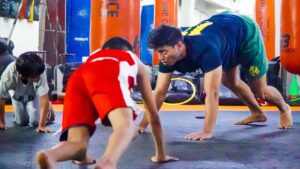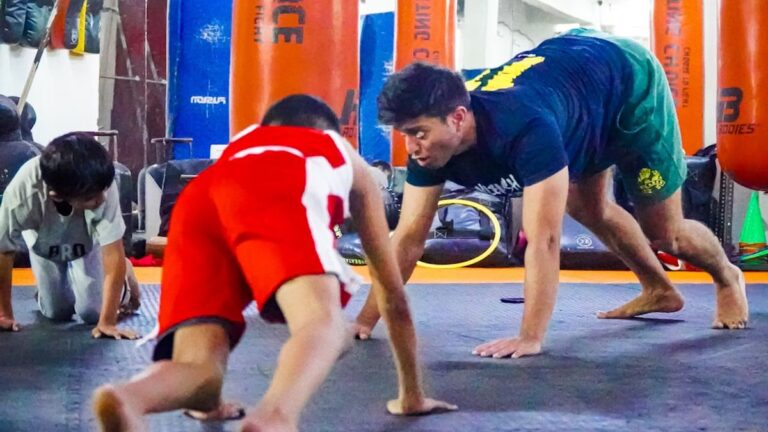Unleashing the Power of Mindfulness in Athletic Training
When you think of elite athletes, what comes to mind? Incredible physical prowess? Unyielding discipline? Or maybe it’s the relentless pursuit of perfection that drives them. But in recent years, there’s been a growing recognition that the mental game plays an equally crucial role in athletic success. Enter mindfulness—a practice that, while rooted in ancient traditions, has recently burst onto the athletic training scene like a surprise underdog in a championship match.
It struck me that mindfulness could seem, at first glance, like a buzzword flung around by wellness enthusiasts. You know the type—yoga mats rolled up under their arms, chanting “Namaste” while sipping herbal tea. But this is not just about sitting cross-legged and meditating. Instead, mindfulness in athletic training is about harnessing the power of focus, awareness, and presence to enhance performance. And it’s a game-changer.
The Science Behind Mindfulness
Before we dive into the practical applications, let’s unpack what mindfulness really is. At its core, mindfulness is the practice of being fully present in the moment, aware of your thoughts and feelings without judgment. Research has shown that mindfulness can lead to improvements in focus, resilience, and even physical performance.
According to a study published in the Journal of Sports Psychology, athletes who practiced mindfulness reported a significant increase in their ability to concentrate during competitions. They also demonstrated reduced anxiety levels, which—let’s be honest—can be as debilitating as a physical injury when it comes to performance.
Some studies suggest that incorporating mindfulness into training routines can enhance athletes’ mental toughness. This is crucial, especially in high-stakes situations where the pressure can feel like a ton of bricks on your shoulders. Remember the 2016 Olympics? There were athletes who, despite the immense pressure, performed with poise and grace, and many attributed their success to mindfulness practices.
Mindfulness Techniques for Athletes
So, how can athletes leverage mindfulness to gain a competitive edge? Let’s break it down into digestible pieces—no need to roll out the yoga mat just yet.
1. Breathing Exercises
Ah, the power of the breath! Breathing exercises can help athletes center themselves. Taking a few moments to focus on inhaling and exhaling can calm racing thoughts before a big event. Olympic swimmer Michael Phelps is known for using controlled breathing techniques to enhance his performance. Imagine standing on the block, heart racing, and instead of panicking, you take a deep breath and focus on the rhythm of your body. That’s mindfulness in action.
2. Visualization
Picture this: You’re on the starting line, surrounded by fierce competitors. What separates you? Visualization techniques enable athletes to mentally rehearse their performance, creating a vivid picture of success in their minds. This isn’t just wishful thinking; it’s about creating neural pathways that enhance actual performance. Tennis star Serena Williams often visualizes her matches, seeing each shot in her mind’s eye before executing it on the court. Talk about a mental slam dunk!
3. Body Scans
Now, this one might sound a bit like a fancy spa treatment, but hear me out. A body scan is a mindfulness technique that involves mentally checking in with different parts of your body to identify tension or discomfort. This can be particularly useful after a grueling workout. Recognizing where your body is holding stress can help you address it before it turns into an injury—like that pesky hamstring strain that seems to nag at every runner.
4. Mindful Eating
Nutrition is fundamental to athletic performance, and being mindful about what you eat can make a big difference. Instead of wolfing down a protein bar on the go (guilty as charged), practice mindful eating by savoring each bite. Not only does this promote better digestion, but it also helps you become more attuned to how different foods affect your energy levels and performance. I remember a time when I discovered that my favorite pre-workout snack was actually weighing me down. Lesson learned!
Real-World Applications: Success Stories
It’s one thing to talk about theories, but let’s shine the spotlight on some real-world examples of athletes who have successfully integrated mindfulness into their training regimens.
Take the legendary Kobe Bryant, for instance. The late basketball icon was not only known for his unmatched skills on the court but also for his dedication to mental training. He often practiced mindfulness techniques to enhance focus and clarity, which he believed were essential for his success. In interviews, he mentioned how he’d sit in silence to clear his mind, allowing space for creativity and strategic thinking.
Another shining example is Olympic long-distance runner Deena Kastor. After suffering from injuries that sidelined her career, she turned to mindfulness practices to regain her mental strength. Kastor has spoken about how mindfulness helped her transform her approach to running, allowing her to embrace challenges instead of fearing them. She often emphasizes that the mind is just as significant as the body in achieving athletic goals.
Mindfulness in Team Sports
While we often hear about individual sports and mindfulness, it’s equally critical in team dynamics. Imagine a football team that practices mindfulness together—players focusing not only on their own performance but also on supporting their teammates. This collective mindfulness can cultivate stronger team cohesion and communication.
Research indicates that teams that practice mindfulness experience improved trust and collaboration. Coaches are now integrating mindfulness practices into their training regimens, recognizing that a unified mental approach can lead to enhanced performance on the field. So, the next time you see a team huddled up, they might just be doing more than strategizing; they could be engaging in a moment of collective mindfulness.
Barriers to Mindfulness in Athletic Training
Let’s not sugarcoat it—implementing mindfulness into athletic training isn’t without its challenges. Athletes are often driven, competitive beings who are used to pushing their limits. Taking a pause to breathe or reflect might feel counterintuitive when the instinct is to hustle and grind.
Moreover, there’s the misconception that mindfulness is a “soft” practice, which can deter some from embracing it. Many athletes believe they need to tough it out, that showing vulnerability equates to weakness. But the reality is that cultivating mental resilience through mindfulness can be a game-changer, enabling athletes to face adversity head-on.
How Coaches Can Foster Mindfulness
Coaches play an instrumental role in promoting mindfulness among their athletes. It starts with creating a culture that values mental well-being alongside physical performance. Here are a few strategies:
- Lead by Example: Coaches should practice mindfulness themselves. When athletes see their leaders engaging in mindful practices, they’re more likely to follow suit.
- Integrate Mindfulness into Training: Set aside time during practices for mindfulness exercises, whether it’s breathing techniques, visualization, or group discussions.
- Encourage Open Dialogue: Create an environment where athletes feel comfortable sharing their thoughts and feelings. This promotes emotional intelligence and empathy within the team.
In a world where the competition is fierce, fostering mental resilience can be the edge that leads to victory. Coaches who embrace mindfulness can help cultivate a generation of athletes who are not just physically fit, but mentally sharp.
Mindfulness Resources for Athletes
Ready to dip your toes into the mindful waters? There are plenty of resources available to help athletes incorporate mindfulness into their training:
- Books: Titles like “Mind Gym” by Gary Mack offer insights and exercises specifically designed for athletes.
- Apps: Mindfulness apps like Headspace and Calm provide guided meditations tailored for athletes, making it easy to get started.
- Workshops and Retreats: Look for local workshops focusing on mindfulness for athletes. These can provide hands-on experience and community support.
A Personal Reflection
Reflecting on my own experiences, I can’t help but recall my days as a weekend warrior—chasing glory in the local softball league. We all had that one friend who could hit a home run blindfolded, while I was just trying to remember which base to run to. But in those moments of sheer panic, I found solace in focusing on my breath, reminding myself to be present in the game. It didn’t always translate to a win, but it did transform my experience from stress to enjoyment.
The Future of Mindfulness in Sports
As more athletes and coaches recognize the importance of mental well-being, mindfulness is poised to become an integral part of athletic training. The shift is already happening; you see it in the language of coaches, the practices of athletes, and the research being conducted. Mindfulness is not just a trend; it’s a powerful tool that can help athletes unlock their true potential.
In closing, whether you’re a professional athlete or a weekend warrior, embracing mindfulness can lead to a more fulfilling, focused, and successful athletic experience. The next time you lace up your shoes or step onto the field, take a moment to breathe, visualize, and truly be present. You might just discover a new level of performance that surpasses your wildest expectations.
And who knows? You might even find yourself enjoying the process along the way—after all, isn’t that what it’s all about?













